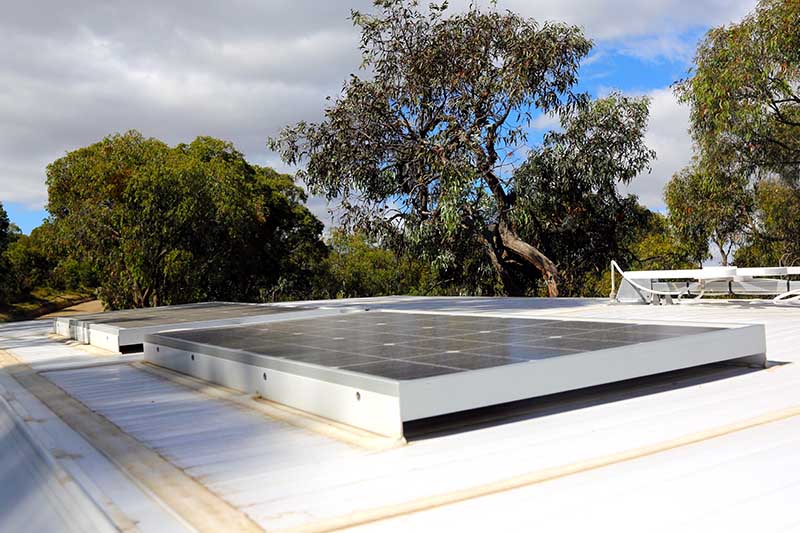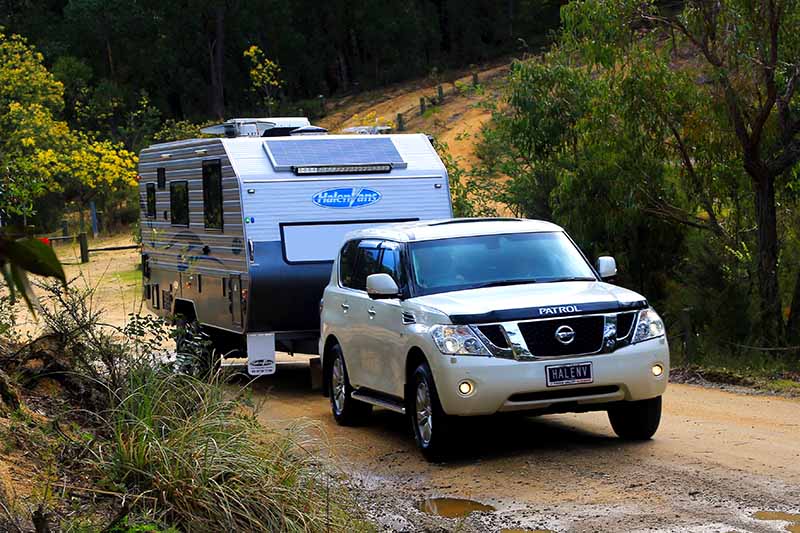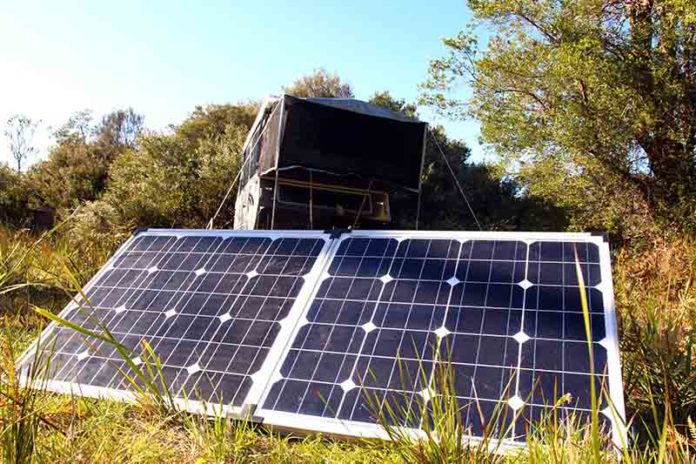The issue of solar for caravans and motorhomes is surrounded by innuendo and outright untruths. Here, we bust 10 of the most common myths.
Myth 1: All solar modules are much the same so buy the cheapest you can (per watt).
Reality: Not all solar modules are the same. This applies not just to output but also to quality. There are less than 50 solar cell makers, of which only 40 or so also manufacture complete solar modules. All others buy the cells (often of low output). A typical 12 volt solar module has 36 cells (72 internal connections). A vast number of Asian assemblers use cheap labour to solder them all manually, with varying degrees of expertise. These are marketed under any number of names or, as eBay shows, often none at all.
The best modules are (in 2017) 18%-19% efficient. Those cheaper are 10%-15%. Vendors claim more, but that is of individual cells, not 36 soldered together with connection and other losses. Expect to pay about $2 per watt.
Myth 2: A 120 watt solar module will produce at least 120 watts in a typical RV installation given a typical Australian sunny day.
Reality: The solar industry promotes the product’s output using the same Standard Operating Conditions (SOC) as for its laboratory testing. That testing, however, emulates that only achievable atop a high equatorial mountain at midday in midwinter.
Solar module reality is the industry’s Normal Operating Cell Temperature (NOCT). This is typically 71% of that seemingly claimed. The makers accept that the SOC is misleading but state it is ‘historical industry practice’ — as if that somehow justifies it. The NOCT is, however, usually revealed in the technical specifications, and even on some modules but in obscure technicalities.
 Myth 3: Solar modules produce the wattage claimed at any time they are in the sun.
Myth 3: Solar modules produce the wattage claimed at any time they are in the sun.
Reality: Solar modules only rarely produce that seemingly claimed in actual usage. Even that NOCT output is only realised during the two/three hours either side of midday in Australia’s summer. Outside those few hours, they will still generate some output — about another 10% or so. (In a few rare places — typically bright sand or within a kilometre or two of the sea — solar radiation can be received directly but additionally by it being reflected from the sand or water up to scattered white cloud and down from there. This can add 20% or so but usually only for a few minutes.)
Myth 4: A solar module loses much of its output unless it faces north and is at roughly the same angle as your latitude.
Reality: For the highest yearly average, solar modules should face north and at the same angle as your latitude. However, if you wanted more over winter, angle them such that they face into the sun at midday, i.e., more vertical, and vice versa for summer.
For typical RV travelling of ‘following the sun’, horizontal mounting is fine. Anywhere north of Geraldton-Brisbane, this actually results in higher output most of the year than if angled.
Myth 5: There is higher solar input up north year around.
Reality: This is true only of May to September. It is then about that of a typical sunny Sydney spring/autumn day. In a northern summer, however, the humid atmosphere (plus inherent solar module heat loss) reduces output. Despite far longer hours of sun, that captured is only 10%-15% higher than in winter. This can cause major issues for those with compressor fridges (that work just fine down south) because it is generally hotter all day — and all night, too. That fridge will thus use 40%-50% more energy. Further, cold beer consumption tends to increase.
Unless your batteries are fully solar charged by noon in typical usage during summer down south, that system has Buckley’s chance of working up north outside the winter months.
Myth 6: Too much solar capacity wrecks batteries.
Reality: This myth stems from the early days of solar. Because, back then, solar regulators were very costly, many users attempted to do without them. They wrongly assumed voltage measurement alone was enough to gauge charging, often leading to cooked batteries. That era has long since gone.
All but the simplest (battery-less solar bore pumping) now has a reliable solar regulator. That regulator controls and manipulates solar input to maximise charging efficiency and totally protect from overcharging.
Myth 7: MPPT (Multiple Power Point Tracking) solar regulators increase solar input by ‘up to 30%’.
Reality: This claim is so common that many solar users believe it may be a minor exaggeration but partly true. It is, however, totally marketing spin. All solar modules have ‘inherent losses’ such that they typically produce 71%-80% of that seemingly claimed. What MPPT does is to reduce some of that loss. MPPT is a bit like a torque converter in a car, but instead of torque and rpm, it juggles volts and amps to (optimise watts). That ‘up to 30%’ is probably true but only for an hour or so after dawn and ditto just prior to sunset, so it’s up to 30% of next to nothing anyway! The typical daily loss recovery is 10%-12.5%.
MPPT is worthwhile, but while it may claim to enable a nominally 100 watt solar module to output ‘up to’ 130 watts, it is likely to result in 78-88 watts instead of 71-80 watts.
 Myth 8: A solar module always produces some output, even during the worst daylight conditions.
Myth 8: A solar module always produces some output, even during the worst daylight conditions.
Reality: There is minor reality here much of the time, but where/when cloud cover is very dense there is only a per cent or so of that normally expected. Smoke from bushfires, however, reduces it to effectively zero.
Myth 9: To connect in parallel, solar modules must all be of the same (amp) capacity.
Reality: Solar modules are like silicon socialists — each gives according to its capacity. They should all be the same general type (i.e., polycrystalline or monocrystalline such that their voltage output is similar) but they can otherwise be of widely varying capacity. Their overall capacity is the sum of each’s individual capacity.
Myth 10: Solar modules of different current outputs may be connected in series.
Reality: The end-to-end voltage will be the sum of each module’s individual voltage (they can be of any voltage) but overall capacity is limited to that of the lowest individual module’s capacity.






